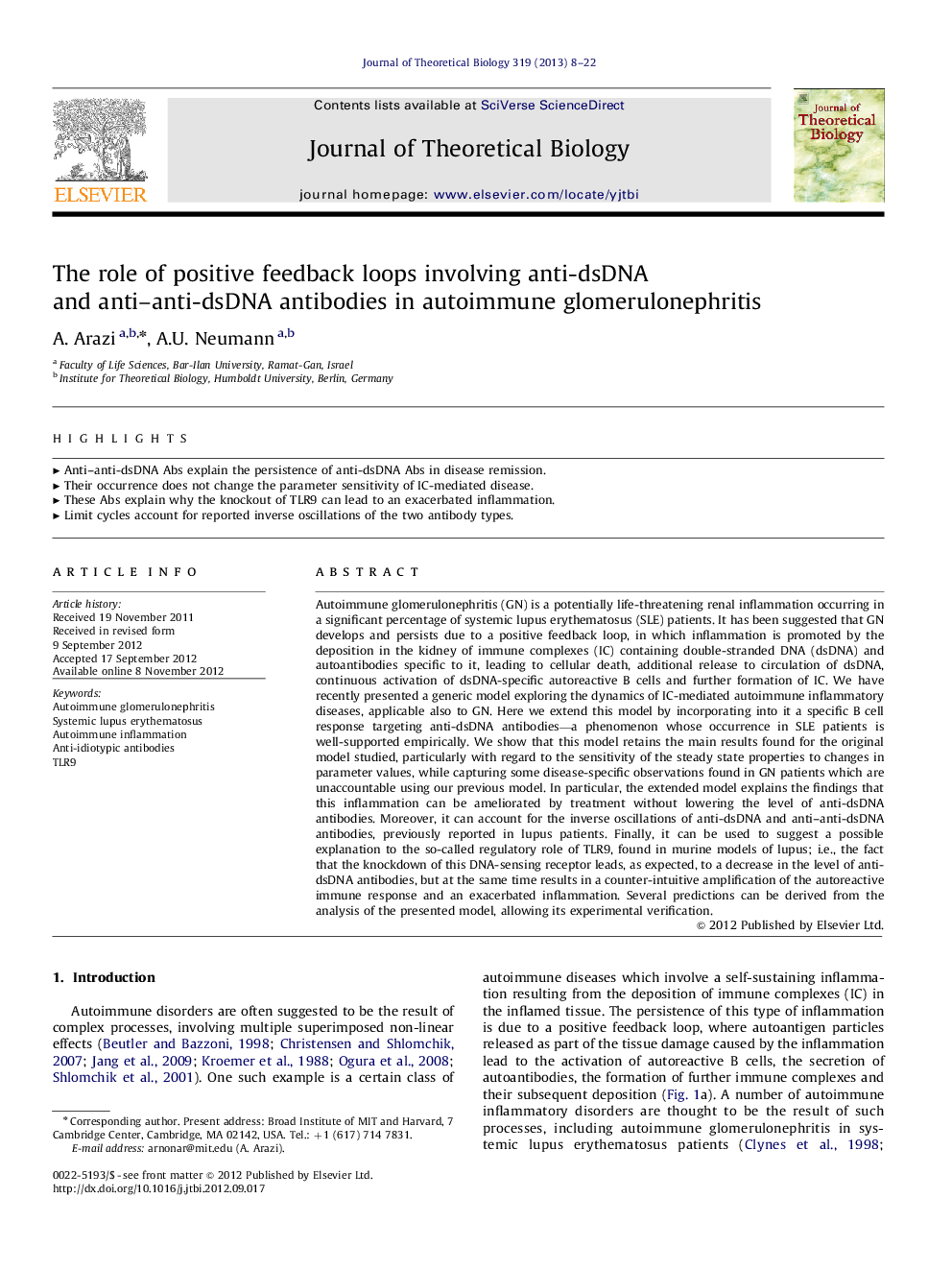| کد مقاله | کد نشریه | سال انتشار | مقاله انگلیسی | نسخه تمام متن |
|---|---|---|---|---|
| 4496521 | 1623891 | 2013 | 15 صفحه PDF | دانلود رایگان |

Autoimmune glomerulonephritis (GN) is a potentially life-threatening renal inflammation occurring in a significant percentage of systemic lupus erythematosus (SLE) patients. It has been suggested that GN develops and persists due to a positive feedback loop, in which inflammation is promoted by the deposition in the kidney of immune complexes (IC) containing double-stranded DNA (dsDNA) and autoantibodies specific to it, leading to cellular death, additional release to circulation of dsDNA, continuous activation of dsDNA-specific autoreactive B cells and further formation of IC. We have recently presented a generic model exploring the dynamics of IC-mediated autoimmune inflammatory diseases, applicable also to GN. Here we extend this model by incorporating into it a specific B cell response targeting anti-dsDNA antibodies—a phenomenon whose occurrence in SLE patients is well-supported empirically. We show that this model retains the main results found for the original model studied, particularly with regard to the sensitivity of the steady state properties to changes in parameter values, while capturing some disease-specific observations found in GN patients which are unaccountable using our previous model. In particular, the extended model explains the findings that this inflammation can be ameliorated by treatment without lowering the level of anti-dsDNA antibodies. Moreover, it can account for the inverse oscillations of anti-dsDNA and anti–anti-dsDNA antibodies, previously reported in lupus patients. Finally, it can be used to suggest a possible explanation to the so-called regulatory role of TLR9, found in murine models of lupus; i.e., the fact that the knockdown of this DNA-sensing receptor leads, as expected, to a decrease in the level of anti-dsDNA antibodies, but at the same time results in a counter-intuitive amplification of the autoreactive immune response and an exacerbated inflammation. Several predictions can be derived from the analysis of the presented model, allowing its experimental verification.
► Anti–anti-dsDNA Abs explain the persistence of anti-dsDNA Abs in disease remission.
► Their occurrence does not change the parameter sensitivity of IC-mediated disease.
► These Abs explain why the knockout of TLR9 can lead to an exacerbated inflammation.
► Limit cycles account for reported inverse oscillations of the two antibody types.
Journal: Journal of Theoretical Biology - Volume 319, 21 February 2013, Pages 8–22